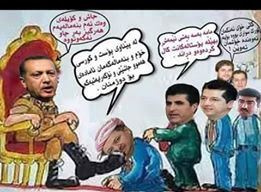It is a sad but true story about the crimes of the Holocaust
The Haunting Photos This Jewish Photographer Buried So The Nazis Could Never Find Them.
Used to take identity photographs and propaganda for the Nazis, Henryk managed to stay useful—and alive. By 1944, however, he’d secretly taken enough photos of the reality of the Nazis’ atrocities that he felt he had to hide them. And so he did
A year after, following liberation, he returned to his hiding spot and dug them up. Now, over 70 years later, those photos remain some of history’s most revealing documents.
1940: Henryk is seen here taking photographs in his position as the identity photographer in the ghetto. This was for identification cars with the Department of Statistics.
1940-1944: A small group of Jewish women walk past the ruins of the Wolborska synagogue, carrying the few items they still own, as they prepare to be deported.
1940: A man walks while carrying a Torah that he managed to save from the rubble of the destroyed synagogue on Wolborska Street. It’s unknown what became of it after this was taken.
1940-1944: A nurse works to feed several children at an orphanage. It is likely that every one of the children there lost their parents to the Nazi occupation and to the deportations.
Before 1939, Henryk Ross had been a news and sports photographer in his hometown of Łódź, Poland. Though he could never have known it prior to the Holocaust, that skill allowed him to both survive Nazi occupation and document some of its most egregious crimes.
Before 1939, Henryk Ross had been a news and sports photographer in his hometown of Łódź, Poland. Though he could never have known it prior to the Holocaust, that skill allowed him to both survive Nazi occupation and document some of its most egregious crimes.
1940-1944: A marriage was held inside the Łódź Ghetto. It is unknown what ultimately happened to the couple, but at least their union offered a small solace as they continued to enjoy their lives even in the most horrendous conditions.
Before 1939, Henryk Ross had been a news and sports photographer in his hometown of Łódź, Poland. Though he could never have known it prior to the Holocaust, that skill allowed him to both survive Nazi occupation and document some of its most egregious crimes.
1940-1944: A very young boy carefully sifts through the dirt looking for food, placing anything he finds, like potatoes, into a small tin sometime during the Nazi occupation
1940-1944: A young girl prepares to pose for a portrait. Notice the star she was forced to wear inside the ghetto. There was no age that was too young to be subjected to the Nazis’ dehumanization and cruelty.
1940-1944: A young girl prepares to pose for a portrait. Notice the star she was forced to wear inside the ghetto. There was no age that was too young to be subjected to the Nazis’ dehumanization and cruelty.
Before 1939, Henryk Ross had been a news and sports photographer in his hometown of Łódź, Poland. Though he could never have known it prior to the Holocaust, that skill allowed him to both survive Nazi occupation and document some of its most egregious crimes.
Used to take identity photographs and propaganda for the Nazis, Henryk managed to stay useful—and alive. By 1944, however, he’d secretly taken enough photos of the reality of the Nazis’ atrocities that he felt he had to hide them. And so he did.
1940-1944: A tattered jacket marked with the yellow Star of David is used as a scarecrow. The empty item of clothing seems to be a stark symbol of the loss experienced there.
Used to take identity photographs and propaganda for the Nazis, Henryk managed to stay useful—and alive. By 1944, however, he’d secretly taken enough photos of the reality of the Nazis’ atrocities that he felt he had to hide them. And so he did.
1940-1944: Several men and women pack up their meager belongings and march toward deportation on a harsh and snowy winter morning in Poland.
Used to take identity photographs and propaganda for the Nazis, Henryk managed to stay useful—and alive. By 1944, however, he’d secretly taken enough photos of the reality of the Nazis’ atrocities that he felt he had to hide them. And so he did
Before 1939, Henryk Ross had been a news and sports photographer in his hometown of Łódź, Poland. Though he could never have known it prior to the Holocaust, that skill allowed him to both survive Nazi occupation and document some of its most egregious crimes.
1944: Food pails, baskets, dishes, and pots all tragically left behind by ghetto residents who had been deported to death camps prior to the liberation of Poland a year later.
1940-1944: A badly water-damaged photograph of a little girl smiling and trying to be happy, despite the circumstances surrounding the shot. The deterioration actually adds to the eerie nature of the photo.
1940-1944: A portrait of a couple in the Łódź Ghetto during the Nazi occupation of Poland; taken by photographer Henryk Ross. Many of the photos that Henryk dug up were damaged by water during their time in hiding.
1945: Henryk is seen with a group of friends as they return to the site where he buried the photo negatives and documents inside the Łódź Ghetto a year prior.
























.jpg)













































































.jpg)
Inga kommentarer:
Skicka en kommentar